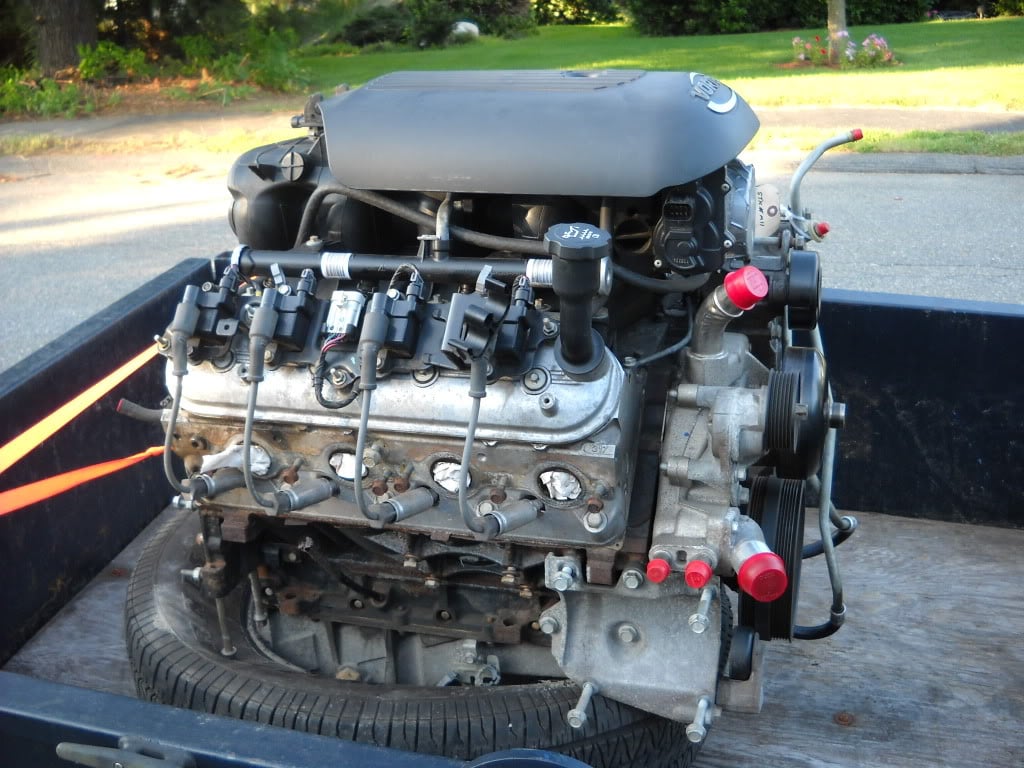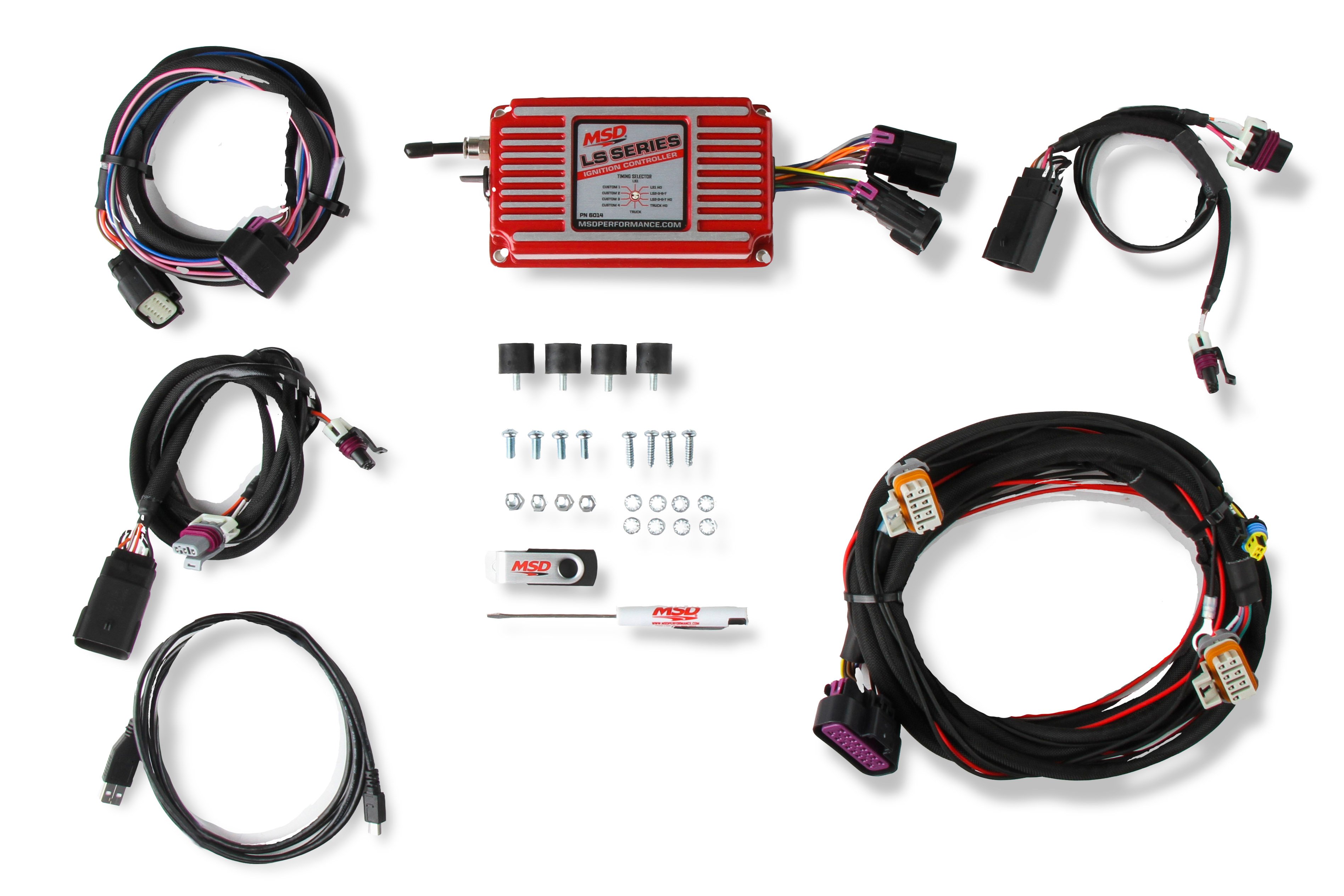Hook Up Free With Ls
X Nude Videos, xxx porn, sex tube, x porn videos. CANADIAN CAMPER GROUP INC. Erich Krause Deutschland GmbH.
- Hook Up Free With Lsu Football
- Hook Up Free With Ls Truck
- Hook Up Free With Lsat
- Hook Up Free With Ls Oil

Dictionary hook up - Find a woman in my area! Free to join to find a man and meet a man online who is single and hunt for you. How to get a good woman. It is not easy for women to find a good man.
LS swapping a vehicle is kind of like dealing with a jigsaw puzzle, but you don’t have all of the pieces in the beginning. It takes a lot of research to figure out what you’re going to need, but don’t worry, the aftermarket has you covered with just about everything. Getting the engine in a vehicle is usually an easy task, but what comes next? Well, you will need to figure out the fuel system, cooling, exhaust, and lastly, the wiring, which is what we are going to focus on in this article with the help of Bill Hillock, owner of BP Automotive.
Installing a standalone harness for an LS swap is really simple if you take your time.
What You Need To Know
Before you order a harness for your project, you’ll need to know some information about your engine and transmission. For example, being able to identify the year of the powerplant, if it’s drive-by-wire or drive-by-cable, what injectors you have, whether it’s a Gen III or Gen IV, and so on will be a big help when ordering a harness. And while GM did an excellent job with the modularity of the Gen III and Gen IV LS engines, they have a few differences that will need to be identified to make sure you get the correct one. But don’t worry if you don’t have all of the answers, as we have a detailed article that will help you sort out all of the information.
The Harness
We visited BP Automotive’s website and ordered a Gen III drive-by-cable engine controller kit for the Suburban. What’s unique about this system is its custom-built standalone harness, preprogrammed GM power control module (PCM), PCM mount, Delphi Mass Air Flow (MAF) sensor, and two AC Delco oxygen sensors. This package gave us everything we needed without having to hit up the auto parts store for a last-minute run.
Our harness from BP Automotive included everything we needed for the installation including the ECU, ECU mount, oxygen sensors, MAF sensor, and stand-alone harness.
Our package showed up within a few days after ordering it, and we were excited to get it unpacked and check out the harness. The first thing we noticed about the BP product is that every wire is labeled. We then remembered that we opted for the braided showstopper loom, and it’s well worth the upgrade of $75. This nylon mesh loom looks and feels much better than the plastic loom used on most standalone units. We also received highly detailed instructions and a document stating that the harness passed quality control with the harness, sensors, and PCM. And while the harness looks really nice, there’s more to it than just looks.
Hillock said, “Our harnesses are built completely in-house which gives us complete control over the quality of our product. We only use TXL cross-linked wire per OEM standards and terminate the connections with specialized production hand tools and other equipment. All BP Automotive harnesses are computer tested to guarantee human error has been eliminated.” So we know if we have any problem with start-up, it’s going to be on our end and not BP Automotive’s.
Let’s Begin
Technically, you could install a standalone harness as soon as the engine and transmission are in the vehicle, but we don’t recommend this method. In our opinion, you’re much better off having the swap as complete as possible before starting the installation process. Components like headers, exhaust pipes, oxygen sensor location, and even mass airflow (MAF) sensor position can dictate some of the wire routings. And as much as we like working on vehicles, backtracking and rerouting are never welcomed.
Be sure and read the instructions before you start the installation process. This will answer about 95-percent of any questions that you might have before you get to work.
When we started this project, the swap on this ‘91 Suburban was about 95-percent complete. The fuel system was plumbed, radiator and fans mounted, exhaust system installed, even the engine had everything on it, including the coils and intake manifold. So, we only had one thing left to do, and that was to install the harness. But don’t get in a hurry. Hillock said, “People get excited and take the harness out of the box and try to install it right away. Slow down, familiarize yourself with the harness laid out, and then read over the instructions. The table of contents is your friend and 99-percent of the questions we get are covered in the instructions.”
We mounted our ECU and fuse box under the hood of our Squarebody on the Driver’s side front fender.
Mounting The PCM
Most of the time, we prefer to mount the PCM in the interior of a vehicle. You can typically mount them behind the dash or under the driver’s or passenger’s seat to hide the unsightly unit. However, the Suburban fought us on this idea. There was no room behind the dash due to A/C ducting, and the bucket seats didn’t offer enough clearance for the device, either. So our only option was to mount it in the engine compartment. We started searching around the engine bay for the perfect spot with the PCM in the GM mount, but we did have one problem: the PCM mount needs to be on a flat surface, and despite the Squarebody’s boxy exterior, the engine compartment is quite curvey.
Ironically, finding a home for the PCM was the most challenging part of the process. To get an idea of where we could mount the PCM, we laid out the harness in the engine compartment. Unfortunately, the passenger side was out due to the battery and A/C system. We looked at the radiator support, too, but that was a no-go because the plugs for the lights protruded out, which left us with one option: the area in front of the wheel well on the driver’s side.
We mocked the PCM up in its new location and made sure we had enough room to get the harness where it needed to go before drilling holes in the inner fender, making it permanent. We should note that the PCM mount is plastic by design; while some aftermarket companies offer metal mounts, GM always uses a plastic mount to ensure the PCM is getting a ground for the intended source and not the chassis, which could cause problems.
Hookin’ It Up

With the PCM and the fuse block mounted, we turned our attention to the harness. BP Automotive makes the installation process simple since it labels each wire. The only thing that might be confusing is the wires marked “Bank 1” and “Bank 2.” Bank 1 refers to the driver’s side of the engine, while Bank 2 is the passenger’s side. Each bank has a coil connector that connects to the coil harness and four fuel injector connectors for each side of the engine.
With the ECU mounted, we started routing the wire where they needed to go. This process may look a little overwhelming at first, but it’s not bad.
With bank one and two sorted and connected into the coils and injectors, we went ahead and secured the idle air control valve (IAC) and throttle position sensor (TPS) located on the throttle body. Next, we mounted the two grounds to the back of the driver’s side cylinder head and connected the knock and cam position sensors located at the back of the engine. We then dropped the power wire, which connects to the starter, oxygen sensor wires, and the crank position sensor wire, down the top of the transmission, making sure to keep them away from the headers.
The only other wires that will need to be run down are the transmission and A/C wires. We routed the wires for the transmission down the tunnel to clear the exhaust and linkage. We then connected the transmission connector and the speed input and output wires. Also, if you have a 4L80e or 4L60e with a transfer case, you will need longer wires for the input speed sensor, because the output sensor will be located in the transfer case. Luckily, BP had an extension harness that allowed us to connect the output speed sensor into the transfer case so we didn’t have to cut the wires. And if you need something special like longer wires or rerouting something, let the manufacturer know before ordering.
BP Automotive can set your harness up for whatever transmission you may have.
“Because we build our harnesses in-house we have the flexibility to customize a build for a customer if needed,” explained Bill. The only exception is changing where the ‘trunk line’ of the harness exits at the passenger rear of the engine. We customize harnesses for 4150-style throttle bodies and intake manifolds in the reverse position all the time. We can add accommodations for ethanol content sensors and other sensor relocations as well, just send us an email and we can easily quote out a cost and lead time. Custom requests generally require an email to ensure that we know exactly what your specifications are.”
Air Conditioning
The factory ECU needs a signal from the high-pressure line when the air conditioning system is on in order to idle the engine up and turn on the cooling fan. For our application, we used BP Automotives aluminum weld-in fitting and GM pressure sensor. BP also offers other types of connectors and products to ease the installation process. However, it is very important to have this piece in place for the system to function properly.
If you're planning on running air conditioning, it's really important to install the correct fitting so that the ECU knows when to activate the cooling fan. BP Automotive offers a few different types of connections for the A/C system lines. The fitting shown here will need to be welded in the high-pressure side aluminum line.
Coolant and Oil Pressure Sensors
The BP harness does not come standard with a connector for the factory oil pressure sending unit, however, you can request the company to add it if you need it. You will use the oil port for a sending unit for factory or aftermarket gauges in most cases. But, if you use a set like Dakota Digital gauges with the OBD II/ Can Interface module, you might consider adding the oil pressure wires back to the harness. Since the OBDII / CAN interface pulls data from the OBDII port for the gauges to display, adding the wires means you would have less to run back in the cab. The same goes for the coolant sensor. Since we’re running the Dakota Digital gauges and the OBDII / CAN interface, we don’t need to add an additional water temperature sensor to the mix, since the harness has one. However, it’s not a big deal as the passenger-side head has a port that can be removed and replaced, allowing two temperature sensors.
We tapped into the driver’s side cylinder head for our coolant temperature sensor. You can also use the other port on the rear of the Passenger’s side head as well.
Mass Airflow Sensor
The mass airflow (MAF) sensor wires are pretty long, giving us plenty of room to route the wires to the sensor. However, they are routed on the bank two (passenger’s) side of the engine. Since the battery on our truck is on the passenger side, we were forced to either relocate the battery or run the air filter on the driver side. In hindsight, we should have let BP know about this and it could have made this correction for us. The problem now is the wires are dangerously close to the serpentine belt that could cause problems down the road if we’re not careful.
In this image, you can see how close the MAF wires are to the belt. You want to make sure that they are secure so they won’t get caught up in the belt or accessories.
Bundles Of Fun
Up until this point, our harness has been nothing but plug-and-play. But you do have a few wires that will need to be hooked up, marked as Bundles 1,2, and 3. We should mention that we like to use uninsulated connectors and heat-shrink with adhesive to connect wires. This method makes for a secure connection you can see, and the glue in the heat shrink keeps moisture out. But, you can use insulated connectors or solder to get the job done. Just take your time and make sure you have everything laid out before cutting and splicing wires together.
We spliced the wire together using a non-insulated connector and then use heat shrink with adhesive to seal the connection off from the elements.
Bundle One
Bundle one contains a two-wire hook-up that will get our engine started. The two circuits are switched ignition and fuel pump. Since the fuse box already has a relay for the fuel pump, we only needed to hook up one wire. We found the existing fuel pump wire in the engine compartment and spliced the two together.

The switched ignition wire was next on our list, which we routed to the cab’s interior. Switched ignition means that the wire will not have any current running through it until the ignition switch is turned to the ‘on’ or ‘run’ position. This wire in the factory harness is easy to find with a test light. After we found the correct one, we connected it with the pink/black wire in the BP harness.
Bundle Two
Bundle two consists of four wires for electric fans. The BP instructions have a diagram to show you how to hook these up in either a single or dual fan configuration. In addition, you will need one or two relays, depending on the route you choose. We used two fans from GC Cooling and their relays and harnesses and tied in the BP harness wires for a clean installation. BP also offers its own relay set that is color-coded to match the wire of the harness making for an easy hookup.
Each wire in the harness is clearly labeled for quick and easy identification.
Bundle Three
Bundle three has the most wires and will all need to be in the interior of the vehicle. Since we mounted our ECM in the engine compartment, we decided to unpin the OBDII module to route the wire through a factory grommet in the firewall. Sure, we could have drilled a larger hole, but we prefer to use an existing hole when possible. If you plan to unpin the OBDII port, make sure to mark the wires and where they go. This is extremely important and could cause severe problems if done incorrectly. Fortunately, the connector has numbers on it to make the process a little easier.

We disassembled the OBD II connector in order to route it to the interior of our Squarebody.
After we reassembled the OBDII port on the inside of the truck, we routed the rest of the wires into the cab. This wire set includes the tach output, speedometer, malfunction indicator, and brake switch. The tach and speed wire is straightforward, as you will connect them to the inputs on electronic gauges. The malfunction indicator wires will connect to the check engine light, so if the ECU sees a problem, you get the notification. However, if you try to use an LED light, it will stay on constantly, and you will need to wire in a resistor so that it will function properly. BP offers a resistor if you require one, which we did.
The last item that needs to be wired in Bundle 3 is the TCC/ Brake switch which is required for the 4L60 and 4l80 transmissions. This switch tells the ECU when the brake is applied so that it knows to unlock the torque converter. We used part number TCC-001 and replaced the Square-body brake switch. This switch has two sets of terminals: one for the brake lights and another for the ECU.
The TCC/ Brake switch allows the ECU to know when the brake is applied and to disengage the torque converter lockup.
Get Ready To Rumble
We spent a few hours on this installation, and at this point, our vehicle is ready to fire up. However, since it has a cam, headers, and larger injectors, we will need additional tuning before it’s ready to hit the road, but this LS swap is 100-percent complete.
Everything is buttoned up and we are almost ready to hit the road.
Hook Up Free With Lsu Football

When you get ready to install a new harness, we strongly recommend reading all of the instructions. Doing so will save you a lot of time and possible headaches during the process and don’t overthink it. “While it may seem like it’s too simple or that you are missing something, installing a BP Automotive harness is that simple,” added Hillock.
Hook Up Free With Ls Truck
plug-in-play-installing-a-standalone-harness-for-an-ls-swap-2021-08-10_18-44-30_110952
plug-in-play-installing-a-standalone-harness-for-an-ls-swap-2021-08-10_18-44-16_321038
plug-in-play-installing-a-standalone-harness-for-an-ls-swap-2021-08-10_18-43-46_639326
plug-in-play-installing-a-standalone-harness-for-an-ls-swap-2021-08-10_18-43-33_355905
plug-in-play-installing-a-standalone-harness-for-an-ls-swap-2021-08-10_18-43-17_761074
plug-in-play-installing-a-standalone-harness-for-an-ls-swap-2021-08-10_18-43-01_431312
plug-in-play-installing-a-standalone-harness-for-an-ls-swap-2021-08-10_18-42-48_940502
plug-in-play-installing-a-standalone-harness-for-an-ls-swap-2021-08-10_18-42-35_156201
plug-in-play-installing-a-standalone-harness-for-an-ls-swap-2021-08-10_18-42-23_009288
plug-in-play-installing-a-standalone-harness-for-an-ls-swap-2021-08-10_18-42-10_257056
plug-in-play-installing-a-standalone-harness-for-an-ls-swap-2021-08-10_18-41-56_846220
plug-in-play-installing-a-standalone-harness-for-an-ls-swap-2021-08-10_18-41-45_160018
plug-in-play-installing-a-standalone-harness-for-an-ls-swap-2021-08-10_18-41-33_506259
plug-in-play-installing-a-standalone-harness-for-an-ls-swap-2021-08-10_18-41-19_863030
plug-in-play-installing-a-standalone-harness-for-an-ls-swap-2021-08-10_18-41-05_971289
plug-in-play-installing-a-standalone-harness-for-an-ls-swap-2021-08-10_18-40-54_519744
plug-in-play-installing-a-standalone-harness-for-an-ls-swap-2021-08-10_18-40-41_689882
plug-in-play-installing-a-standalone-harness-for-an-ls-swap-2021-08-10_18-40-30_678868
plug-in-play-installing-a-standalone-harness-for-an-ls-swap-2021-08-10_18-40-17_423381
plug-in-play-installing-a-standalone-harness-for-an-ls-swap-2021-08-10_18-40-05_926049
plug-in-play-installing-a-standalone-harness-for-an-ls-swap-2021-08-10_18-39-54_479812
plug-in-play-installing-a-standalone-harness-for-an-ls-swap-2021-08-10_18-39-44_024122
plug-in-play-installing-a-standalone-harness-for-an-ls-swap-2021-08-10_18-39-32_130852
plug-in-play-installing-a-standalone-harness-for-an-ls-swap-2021-08-10_18-39-20_697541
plug-in-play-installing-a-standalone-harness-for-an-ls-swap-2021-08-10_18-39-10_073073
plug-in-play-installing-a-standalone-harness-for-an-ls-swap-2021-08-10_18-38-59_291446
plug-in-play-installing-a-standalone-harness-for-an-ls-swap-2021-08-10_18-38-47_474483
plug-in-play-installing-a-standalone-harness-for-an-ls-swap-2021-08-10_18-38-36_795708
plug-in-play-installing-a-standalone-harness-for-an-ls-swap-2021-08-10_18-38-25_291823
plug-in-play-installing-a-standalone-harness-for-an-ls-swap-2021-08-10_18-38-14_483255
plug-in-play-installing-a-standalone-harness-for-an-ls-swap-2021-08-10_18-38-02_474410
plug-in-play-installing-a-standalone-harness-for-an-ls-swap-2021-08-10_18-36-31_929439
plug-in-play-installing-a-standalone-harness-for-an-ls-swap-2021-08-10_18-36-15_779167
plug-in-play-installing-a-standalone-harness-for-an-ls-swap-2021-08-10_18-36-03_166649
plug-in-play-installing-a-standalone-harness-for-an-ls-swap-2021-08-10_18-35-49_593226
plug-in-play-installing-a-standalone-harness-for-an-ls-swap-2021-08-10_18-35-36_141760
plug-in-play-installing-a-standalone-harness-for-an-ls-swap-2021-08-10_18-35-20_737935
plug-in-play-installing-a-standalone-harness-for-an-ls-swap-2021-08-10_18-35-08_063043
plug-in-play-installing-a-standalone-harness-for-an-ls-swap-2021-08-10_18-34-53_701266
plug-in-play-installing-a-standalone-harness-for-an-ls-swap-2021-08-10_18-34-42_764291
plug-in-play-installing-a-standalone-harness-for-an-ls-swap-2021-08-10_18-34-29_350215
plug-in-play-installing-a-standalone-harness-for-an-ls-swap-2021-08-10_18-34-07_056351
plug-in-play-installing-a-standalone-harness-for-an-ls-swap-2021-08-10_18-33-55_210765
plug-in-play-installing-a-standalone-harness-for-an-ls-swap-2021-08-10_18-33-42_164621
plug-in-play-installing-a-standalone-harness-for-an-ls-swap-2021-08-10_18-33-32_048342
plug-in-play-installing-a-standalone-harness-for-an-ls-swap-2021-08-10_18-33-21_080062
plug-in-play-installing-a-standalone-harness-for-an-ls-swap-2021-08-10_18-33-10_424398
plug-in-play-installing-a-standalone-harness-for-an-ls-swap-2021-08-10_18-32-58_533949
plug-in-play-installing-a-standalone-harness-for-an-ls-swap-2021-08-10_18-32-46_611048
plug-in-play-installing-a-standalone-harness-for-an-ls-swap-2021-08-10_18-32-35_763652
plug-in-play-installing-a-standalone-harness-for-an-ls-swap-2021-08-10_18-32-23_162824
plug-in-play-installing-a-standalone-harness-for-an-ls-swap-2021-08-10_18-32-12_558866
plug-in-play-installing-a-standalone-harness-for-an-ls-swap-2021-08-10_18-32-01_398316
plug-in-play-installing-a-standalone-harness-for-an-ls-swap-2021-08-10_18-31-50_145181
Hook Up Free With Lsat
aHook Up Free With Ls Oil
CHEVROLET 96647739
Chevrolet 2008 HHR amplifer connector C1 wiring Chevrolet 2008 HHR amplifer connector C2 wiring Chevrolet 2008 HHR amplifer connector C1 wiring Chevrolet Tahoe LS 2000 stereo wiring connector Chevrolet Tahoe LS 2000 stereo wiring connector Chevrolet Tahoe LS 2000 stereo wiring connector Chevrolet Venture 2001-2005 stereo wiring connector Chevrolet Captiva 2008 stereo wiring Chevrolet Impala 2002 stereo wiring connector Cevrolet Aveo 2007 radio wiring connector 5 Cevrolet Aveo 2007 radio wiring connector 4 Cevrolet Aveo 2007 radio wiring connector 3 Cevrolet Aveo 2007 radio wiring connector 2 Cevrolet Aveo 2007 radio wiring connector Cevrolet Aveo 2007 stereo wiring connector Chevrolet S-10 1998 stereo wiring connector 4 Chevrolet S-10 1998 stereo wiring connector 3 Chevrolet S-10 1998 stereo wiring connector 2 Chevrolet S-10 1998 stereo wiring connector Chevrolet Malibu 2002 stereo wiring connector 2 Chevrolet Malibu 2002 stereo wiring connector Chevrolet Cobalt 2006 U2K stereo wiring connector Chevrolet Cobalt 2007 Chevrolet Cobalt 2005 radio C1 wiring connector Chevrolet Metro 2001 GM car radio wiring connector audio The factory wire colors given are typical of most GM vehicles.
|